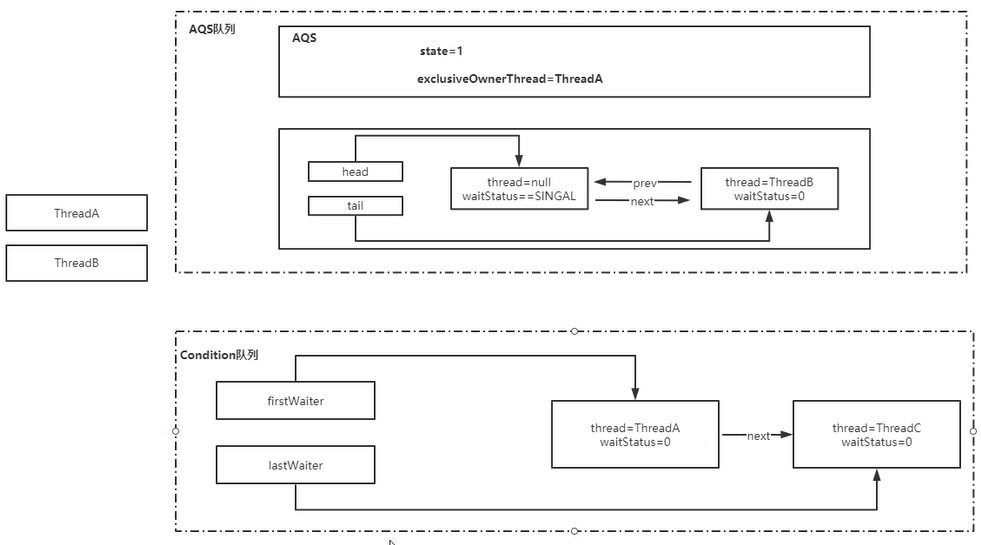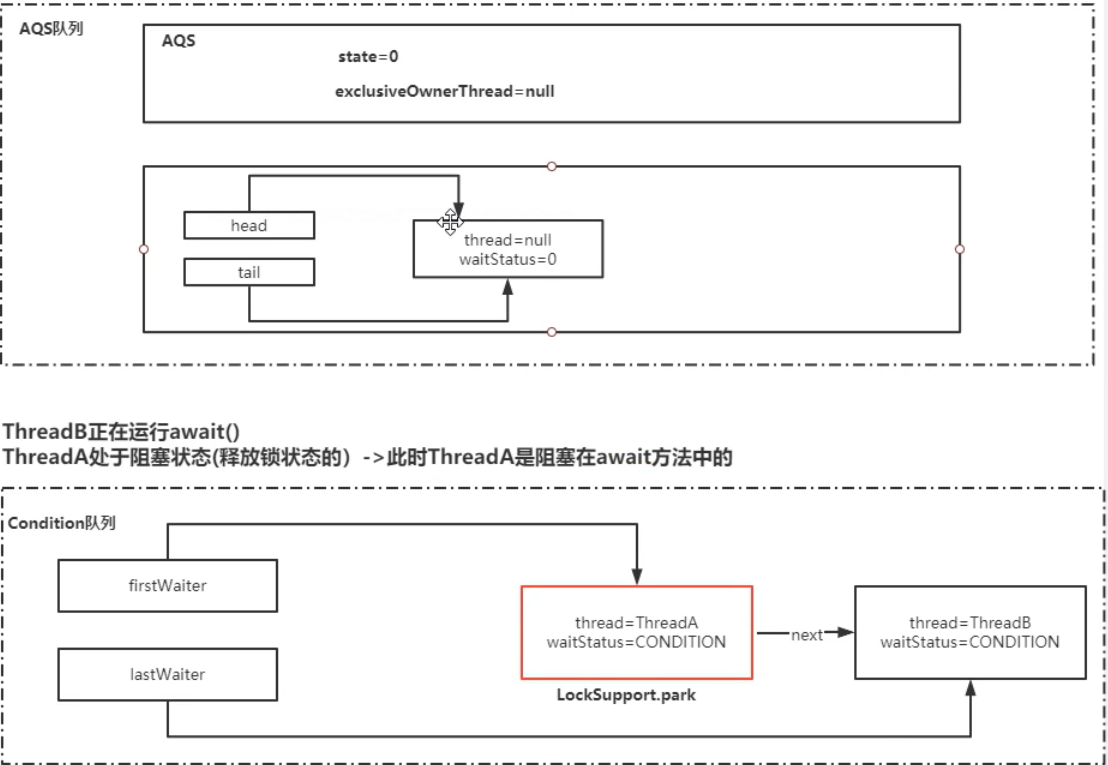一、Condition.await()做了什么?
1 public final void await() throws InterruptedException { 2 if (Thread.interrupted()) 3 throw new InterruptedException(); 4 Node node = addConditionWaiter(); 5 int savedState = fullyRelease(node); 6 int interruptMode = 0; 7 while (!isOnSyncQueue(node)) { 8 LockSupport.park(this); 9 if ((interruptMode = checkInterruptWhileWaiting(node)) != 0) 10 break; 11 } 12 if (acquireQueued(node, savedState) && interruptMode != THROW_IE) 13 interruptMode = REINTERRUPT; 14 if (node.nextWaiter != null) // clean up if cancelled 15 unlinkCancelledWaiters(); 16 if (interruptMode != 0) 17 reportInterruptAfterWait(interruptMode); 18 }
1 //1.当前持有锁并调用await()方法的线程构建成一个condition队列 2 private Node addConditionWaiter() { 3 Node t = lastWaiter; 4 if (t != null && t.waitStatus != Node.CONDITION) { 5 unlinkCancelledWaiters(); 6 t = lastWaiter; 7 } 8 //获得锁的线程构建成一个Node 9 Node node = new Node(Thread.currentThread(), Node.CONDITION); 10 if (t == null) 11 firstWaiter = node; 12 else 13 t.nextWaiter = node; 14 lastWaiter = node; 15 return node; 16 }

1 //2.释放锁,唤醒阻塞状态下的线程 2 final int fullyRelease(Node node) { 3 boolean failed = true; 4 try { 5 int savedState = getState(); 6 if (release(savedState)) { 7 failed = false; 8 return savedState; 9 } else { 10 throw new IllegalMonitorStateException(); 11 } 12 } finally { 13 if (failed) 14 node.waitStatus = Node.CANCELLED; 15 } 16 }
1 //3.判断节点是否在AQS同步队列中 2 final boolean isOnSyncQueue(Node node) { 3 if (node.waitStatus == Node.CONDITION || node.prev == null) 4 return false; 5 if (node.next != null) // If has successor, it must be on queue 6 return true; 7 //遍历查找 8 return findNodeFromTail(node); 9 }

二、Condition.signal()方法做了啥?
1.原tail节点是CANCELED状态
2.condition的节点transfer到aqs队列之后,通过lock.unlock()唤醒
1 public final void signal() { 2 if (!isHeldExclusively()) 3 throw new IllegalMonitorStateException(); 4 Node first = firstWaiter; 5 if (first != null) 6 doSignal(first); 7 }
1 private void doSignal(Node first) { 2 do { 3 if ( (firstWaiter = first.nextWaiter) == null) 4 lastWaiter = null; 5 first.nextWaiter = null; 6 } while (!transferForSignal(first) && 7 (first = firstWaiter) != null); 8 }
1 final boolean transferForSignal(Node node) { 2 if (!compareAndSetWaitStatus(node, Node.CONDITION, 0)) 3 return false; 4 //将节点从Condition队列移出加入AQS队列 5 Node p = enq(node); 6 int ws = p.waitStatus; 7 if (ws > 0 || !compareAndSetWaitStatus(p, ws, Node.SIGNAL)) 8 LockSupport.unpark(node.thread); 9 return true; 10 }


